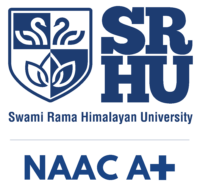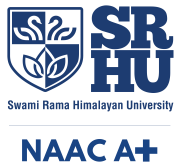Best Practices
March 21, 2025 2025-04-03 6:18Best Practices
Best Practices
1. Advance Cadaveric Training Lab
Medical programmes lay immense focus on improving anatomic knowledge for surgical procedures. Surgeons need a good understanding of anatomy to manage patients intra-operatively and post-operatively. Cadaveric workshops help in improving the surgical procedural skills without the stress of an operation theatre.
The objective of the Cadaver lab is to provide a facility for improving procedural knowledge, understanding difficult anatomical relationships, and improving operative confidence for complex surgeries, further supporting the utility of simulation as a tool to help prepare trainees for independent practice through hands-on training.
Cadaver is an important tool for medical education as it gives immense information forming the basis of knowledge for medical students. Until recently, cadavers were used for learning by dissection only during first year of medical education,. Now, clinical students & clinicians and doctors from other centers also use cadavers for Self-Directed Learning with near real situation.
Training in surgical specialties, particularly operative skills is a complex task involving training, ethical issues, and patient factors. Cadaveric skills lab is a cost-effective solution for learning various operative procedures, critical steps and that too in almost identical ways it would be performed in living patients. Trainings on cadavers provide a comprehensive understanding of various topics through lectures, case discussions and cadaveric dissections. Learners get a chance to directly view important anatomical structures along with surgical approaches and implant placements. Hands-on training under direct supervision of expert faculty in simulated environments is an innovative way of practical training.
Initially, there were cadaveric workshops for internal postgraduate students in University with formalin-fixed limbs. However, such cadavers failed to provide a life-like experience, and this led to the concept of soft cadavers with good joint flexibility. Over a period, we developed techniques of preservation which have now become the main strength of our unit.
We now provide regular training to not only our own students, also medical professionals of other institutions also come here now for advanced learning, often facilitated by our collaborators. The quality of cadavers is matchless, hence these organizations prefer our facility because of available life-like cadavers.
We organize body donation camps in potential areas like old age homes and receive ample body donations under the body donation drive conducted by the Department of Anatomy. All donors are duly acknowledged, and transport facility is provided during body collection. All bodies are immunologically tested while receiving them to ensure complete safety of learners.
We have a separate cold chamber for body preservation in the mortuary unit with 24x7 power backup and has storage racks to accommodate 16-20 cadavers in body-sealing bags at temperatures of -17/18 degrees centigrade. We have sufficient soft cadavers, 4 operating stations with overhead OT lights and monitors along with facilities of video/ audio recording and LCD for transmission of surgeries. Also, we have two C-arms with good resolution of digital X-Ray plates and a high backup memory. There is an annexed Conference Hall to conduct Lectures and discussions with interactive live screen conferencing. There is adequate space to accommodate 50 delegates at any point of time. Proximity to the airport adds to our strength and makes our facility easily accessible to delegates.
Workshops conducted with many academic and other organizations of national/ international repute as mentioned below:
Workshops conducted with many academic and other organizations of national/ international repute as mentioned below:
Through our recent agreement with Stryker India Private Limited and Stryker Global Technology Centre Private Limited we are in the process to introduce robotic cadaveric surgery training in 2024, which shall make us pioneers in the field of robotic cadaveric workshops in this part of the country.
It has been 10 years now since we started Cadaveric Workshops in our esteemed Institute. The following table shows the number of workshops held each year:
The Institute has been conducting 12-13 cadaveric workshops annually and helping almost 200 young budding doctors hone their practical skills. It speaks of our untiring, dedicated and committed duties towards creating skilled surgeons. In all, 89 workshops were held in the 10 year period benefitting 1955 participants.
Procuring good quality cadavers has been the biggest challenge for us with legalities becoming stringent day by day but we countered this by organizing body donation awareness programs in the targeted community. Through these programs, we educate the community regarding donating bodies after death for teaching, training/research purposes. At present, these programs have become the main source of body procurement. However, active support from the Government authorities is required for procuring a greater number of unclaimed bodies.
Huge cost of maintenance: The cold chamber facility demands 24x7 power backup which imposes huge maintenance charges.
A dedicated CT scan/MRI Scan facility attached to the unit is the need of the day considering our plan to start robotic cadaveric workshops in future.
The availability of Cadaveric Labs needs to be expanded throughout the country and this model of enhancing surgical skills can be replicated elsewhere.
2. Dedicated Regional Centre for Medical Education Technologies
In its initial years as a Medical College, Himalayan Institute of Medical Sciences (HIMS) faced challenges in hiring good faculty members since it was located in a rural area. It was important that teachers should use innovative methods in classroom and make the experience for a student, more enjoyable- as envisioned by the founder, HH Swami Rama.
In the above background, two teachers from HIMS were initially trained at Maulana Azad Medical College, Delhi as part of Training-of-Teachers. Further, AIIMS (Delhi) conducted workshops for HIMS faculty in teaching methodologies. Later, several workshops were also held on leadership by Manipal University. This led to a capable training team of 10 HIMS faculty members some of whom are even FAIMER fellows with several also acquiring advanced training in Medical Education.
The dedicated team started conducting regular workshops on medical education technologies for its own faculty members. This led to improvement in the teaching standards at HIMS. Appreciating the potential of the teacher training wing of HIMS, MCI awarded the effort and recognised the Center as a Regional Center for Medical Education for training of teachers of other Seventeen medical colleges of northern India.
Once the Medical Education Unit at HIMS was granted the status of the regional centre, it began to take up faculty development programs for teachers of other medical colleges conducting the Basic Course Workshops in Medical Education (BCME)- a three-day training program for enabling faculty from medical colleges to function as more effective teachers. This workshop includes teaching, learning, assessment, and personal development themes designed specifically for professional teachers. MCI/NMC mandated HIMS to start conducting the BCMEs and Curriculum Implementation Support Program (CISP) for Medical College teachers by creating master trainers. The master trainers, in turn, conduct FDPs for their own and for the 17 allocated medical colleges. These workshops are designed and developed by Academic Cell of NMC and implemented with the help of Regional and Nodal Centers across the country.
During COVID Pandemic the centre played a pro-active role in training faculty members of HIMS as well as other 17 medical colleges in online teaching and launched hybrid mode of training so that our observers could monitor the workshops conducted at other medical colleges. Two months later, we began conducting online workshops to help implementation of competency-based curriculum across all allocated medical colleges. Our effort was part of the national initiative and was greatly appreciated. During this period, the center also imparted training for online teaching and assessment for the SRHU in- house faculty, to ensure teaching quality.
In 2022, our Regional Centre organised the first National Conference for Allied healthcare Professionals in Uttarakhand in collaboration with FAIMER Institute, Philadelphia, and Association of Health Profession Educators, India. This initiative brought together national and international experts in medical education, and HIMS conducted 24 workshops and a 2-day conference, in Hybrid mode.
During the last five years, 272 programmes benefitting 28,779 participants were conducted: 39 FDPs/ Basic Course Workshops/ Attitude Ethics & Communication Modules (AETCOMs)/ Curriculum Implementation Support Programmes (CISP) benefitting 997 teachers; 218 CME/ Guest lectures/ Clinical Grand Rounds benefiting 26146 participants; 5 Post Graduate medical students' Refresher courses benefitting 443 participants, and 10 Orientation programmes for under-graduate & post graduate medical students benefitting 1193 participants were held.
Getting trained resource persons is challenging. Hence, we internally groomed some faculty members, who had a passion for medical education, from different specialities. They underwent advanced courses and FAIMER fellowships and continued their additional engagement with the centre.
We also faced challenges during COVID times when our systems were not ready for taking online sessions.
We are in the process of extending the same model in our other academic units in allied health sciences area, and even others such as engineering, and management. We also aspire to become a Nodal center in the near future.
Institutions can learn from our experience which demonstrates how the vision of few individuals can create excellence leading to set up of a Regional Center with sheer dedication, focus, and unrelenting efforts.

